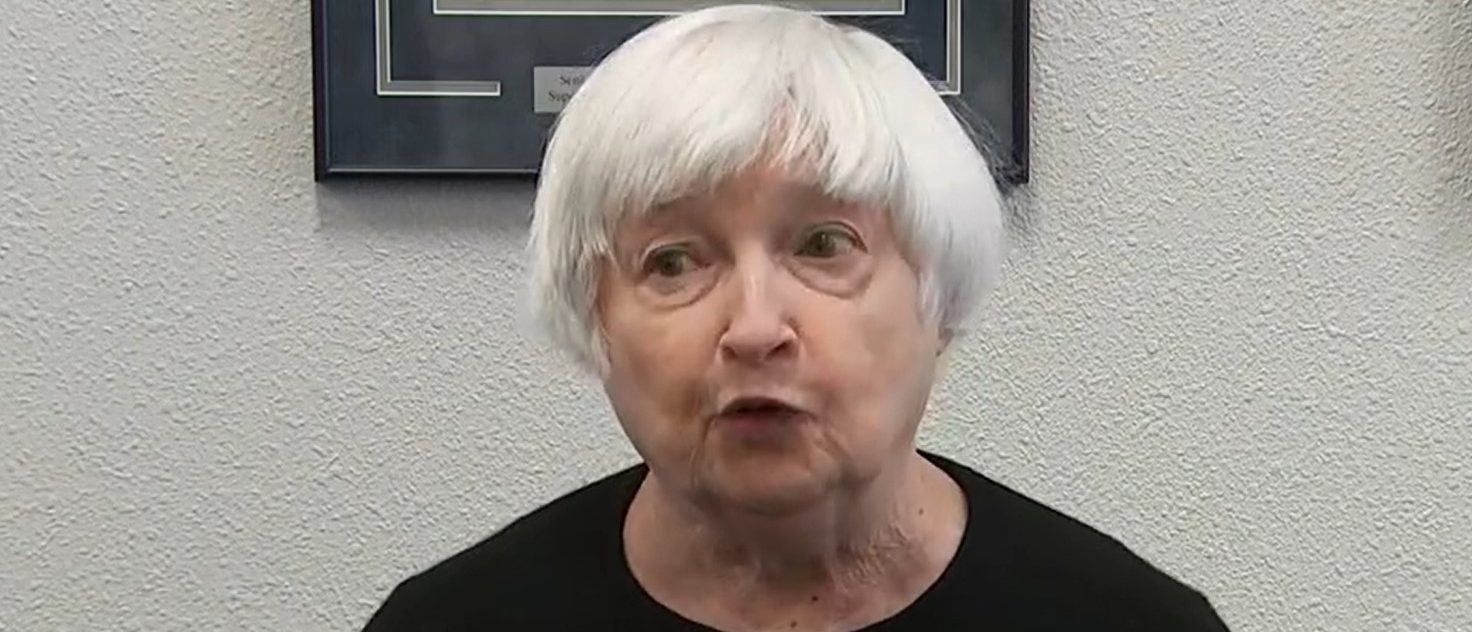Commentary: Big Tent Ideas
JAMES CARTER: Dissecting The US Treasury’s Dastardly Debt Disaster

(Screen Capture/CSPAN)
Count five seconds. The federal government spent, in those few seconds, $137,940 on interest on the federal debt.
Shockingly, the $870 billion the federal government will spend on interest this year is three times greater than what the Congressional Budget Office (CBO) estimated for fiscal year 2024 just three years ago. It didn’t need to be this way.
A dozen years ago, as a former deputy assistant Treasury secretary, I urged the U.S. Treasury to issue 100-year bonds to lock in the rock-bottom interest rates prevalent at the time. Although those low rates persisted longer than most anticipated, they were among the first casualties of Bidenflation.
When inflation surged to 9.1% in June 2022 from 1.4% in January 2021, interest rates followed upward.
Issuing ultra-long bonds a decade ago would not have solved all of America’s fiscal problems, but doing so would have mitigated the risk associated with higher interest rates. One percent yields on 10-year Treasury notes were never going to be permanent, and the Treasury should never have acted as if near-zero interest rates were here to stay.
This is not rocket science.
When interest rates were historically low, it was easy for the Treasury to issue short-term debt and enjoy virtually “free” money. Issuing longer-term debt would have necessitated paying minimally higher interest rates, but doing so would have lessened the risk of having to refinance that debt later at substantially higher rates.
But the Treasury mostly stuck to short-term borrowing, with the average duration of bonds at just 5.9 years. As a result, Treasury is rolling over trillions of dollars of maturing debt this year at a steeper cost.
Although CBO estimates the federal deficit will total roughly $1.5 trillion this year, Treasury, by the end of the year, will have also financed about $8.5 trillion in maturing debt. And given that all of that debt is being financed at higher interest rates, federal interest outlays are surging with NO relief in sight.
Treasury’s dastardly — call it cowardly — decision to continue with short-term debt had the effect of adding hundreds of billions of dollars to federal interest outlays (and the budget deficit) annually.
It’s a debt disaster. A disaster of enormous proportions; a disaster the Treasury could have avoided.
The jump in interest rates, and the resulting surge in net interest outlays, substantially worsened the federal budget deficit. This vicious cycle recently prompted CBO Director Phillip Swagel to comment: “It’s a slow spiral, but it’s still a spiral—of rising debt and rising payments on the debt. The situation is unsustainable.”
While the U.S. ignored pleas to lock in low borrowing rates, several other countries apparently read my memos. At least 14 countries—including Austria, Belgium, Mexico, and Ireland—have issued ultra-long bonds, as have dozens of private companies and universities, including Disney, Norfolk Southern, Coca-Cola, IBM, Ford, Federal Express, Yale University, the University of Pennsylvania, Ohio State University, and the University of Southern California.
Yet, in March 2021, when Treasury notes still yielded about 1.5 percent, Treasury Secretary Janet Yellen made it clear that President Joe Biden’s administration had no interest in locking in those terms for generations to come. “Treasury has been looking at this question and has no current plans to do that,” she said.
Since Secretary Yellen issued that statement, rates have tripled, leading seasoned hedge fund manager Stanley Druckenmiller to declare her decision the “biggest blunder” in Treasury history.
The biggest blunder … ever.
Interest rates have been inverted, with longer-term debt commanding lower interest rates than short-term debt, for nearly 700 days. That’s a modern record. It’s also an opportunity for the Biden Treasury to issue ultra-long bonds with 50- and 100-year durations.
The Treasury should have issued ultra-long bonds more than a decade ago, but U.S. taxpayers can still benefit from the issuance of ultra-long bonds now.
According to CBO, if interest rates paid on the federal debt are 0.1 percentage points higher over the coming decade than currently estimated, the federal government will spend $324 billion more on net interest through fiscal year 2034.
$324 billion more spending on net interest for a deviation of 0.1 percentage points! Consider the taxpayer exposure should interest rates surge even further! (And don’t forget, CBO already expects interest rates to creep up in the years ahead.)
The U.S. Treasury handed the American public a dastardly debt disaster, but there’s still time to minimize the damage.
Following a two-year stint in the White House as an Associate Director of the National Economic Council, James Carter served as Deputy Undersecretary of Labor and a Deputy Assistant Secretary of the Treasury under President George W. Bush.
The views and opinions expressed in this commentary are those of the author and do not reflect the official position of the Daily Caller News Foundation.
(Featured Image Media Credit: Screen Capture/CSPAN)
All content created by the Daily Caller News Foundation, an independent and nonpartisan newswire service, is available without charge to any legitimate news publisher that can provide a large audience. All republished articles must include our logo, our reporter’s byline and their DCNF affiliation. For any questions about our guidelines or partnering with us, please contact [email protected].

